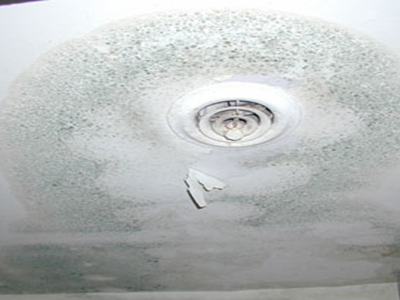Mold & Moisture
Related Topics
Environmental Health Division
Mold in Rental Housing
The purpose of this information is to help tenants better understand the hazards associated with indoor mold growth and the options available to resolve mold problems. The rights and responsibilities of tenants and landlords with respect to mold can vary depending on the terms of the lease contract, the cause of mold growth and whether local government agencies can intervene.
According to Minnesota Statutes, Chapter 504B, the landlord is responsible to make sure that a rental unit is:
- Fit to live in.
- Kept in reasonable repair.
- Kept in compliance with state and local health and safety laws.
There are few laws or codes that specifically reference indoor mold growth. Some laws or codes mention disrepair, which may be the underlying cause of a moisture problem that leads to mold. Landlords and tenants should work cooperatively to keep rental units dry and free of mold growth.
What can I do as a tenant?
Renters can address some minor moisture problems themselves.
- Always use bathroom fans during and after bathing/showering.
- Clean up spills and leaks quickly—especially on carpets.
- Use kitchen fans when cooking to reduce humidity.
- Don’t run showers or boil water to humidify your home.
- Avoid using humidifiers unless there is a medical reason to use one.
- Ensure good air movement in your home to help prevent condensation:
- Open windows when possible.
- Don't block supply and return registers with furniture.
- Keep a few inches of space between furniture and walls.
Tenants should promptly notify their landlord when they find a moisture problem or indoor mold growth. Common moisture problems such as pipe leaks, roof leaks, sewage back-ups and overflowing toilets/sinks/bathtubs can become mold problems if they are not address quickly.
For ongoing problems, notification should be in writing to help avoid misunderstandings. Request that repairs be completed within 14 days. Tenants should keep copies of letters.
If there is mold growing indoors, the moisture problem needs to be corrected and the mold removed. Simply painting over the problem is not going to solve the issue. Growth on surfaces, such as concrete, metal, tile, and solid wood, can be cleaned with water and a household cleaner, if the building material is structurally sound. Porous materials with mold growth, such as dry wall, carpet, upholstery, and insulation, are difficult to clean and should be thrown away.

What are my options if the owner refuses to help?
First, it is important to check the lease agreement between the tenant and the landlord. Leases seldom address mold or moisture specifically, but they should include language specifying how maintenance and repair concerns are handled.
If a landlord fails to make repairs, the Attorney General’s publication, Landlords and Tenants: Rights and Responsibilities (PDF) suggests a number of remedies, including filing a complaint with the local housing, health, or building inspector, if there is one. Tenants can contact their city or county to see what codes and inspection services may be available.
The availability of inspectors and local codes varies throughout the state. Some cities have adopted property maintenance or rental housing codes. Another option may be the local health department. Some local health departments may apply their authority under Minnesota Law to declare a property a public health nuisance and may issue correction orders to the landlord. The Minnesota Department of Health does not provide direct services, such as inspections or testing, for mold problems.
If the city or county are unable to help, you may be able to take legal action, including a rent escrow action. The tenant should try to document the problem, where applicable, with letters, photographs, evidence of health problems, orders from local inspectors, and any other documentation that would help the case. More information on legal rights and action is available from these sources:
- Minnesota Attorney General's Office: Landlords and Tenants: Rights and Responsibilities (PDF)
- Home Line: A non-profit Minnesota statewide tenant advocacy organization
- Emergency Repair Problems (PDF)
- LawHelpMN.org - Legal Information for Tenants
Options if you live in subsidized or public housing
The process of requesting help with a mold or moisture issue in subsidized housing begins the same way as it does for all other rental properties: submit a written request to the property management requesting repairs. If management is not cooperative, residents may have additional options.
Individuals receiving rent assistance may have a social worker assigned to their area who can help mediate between the tenant and landlord. Contact the local public housing agency (PHA) to see what services might be available. If this is unsuccessful, the tenant can try contacting the Minnesota Housing and Urban Development Office (HUD).
Who is responsible for a tenants belongings?
Typically, tenants are responsible for their own belongings unless they can prove that the building owner’s negligence contributed to the damage. The insurance covered by a building owner normally does not cover tenant’s personal belongings. Tenants can purchase renter’s insurance to protect their items. The terms of the policy will state what coverage is provided. If a tenant needs to make a claim, it is important to document damage with photographs and written descriptions and then contact their agent or insurance company.